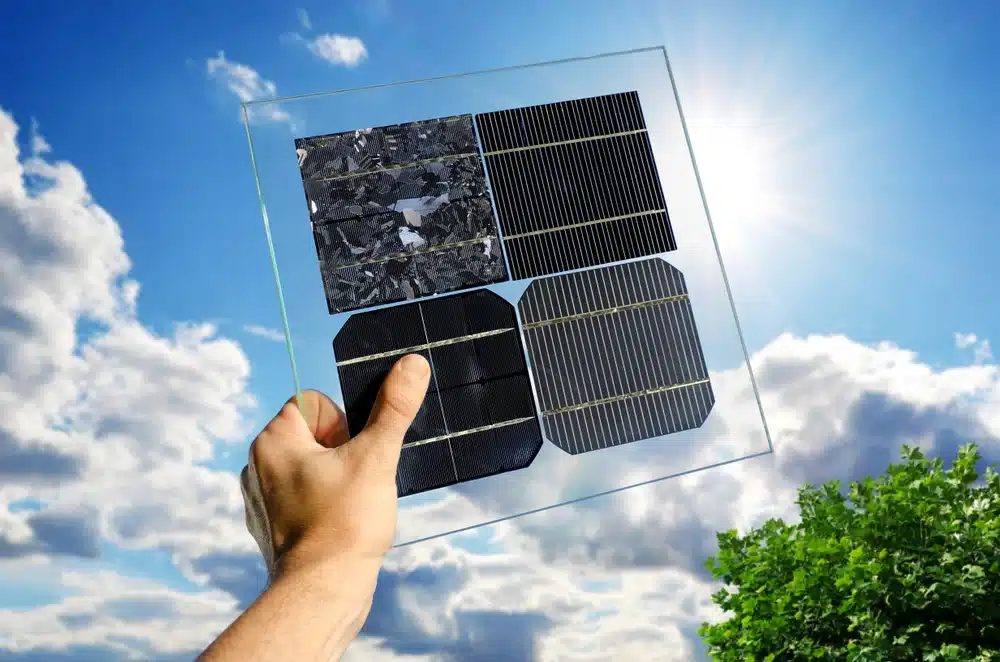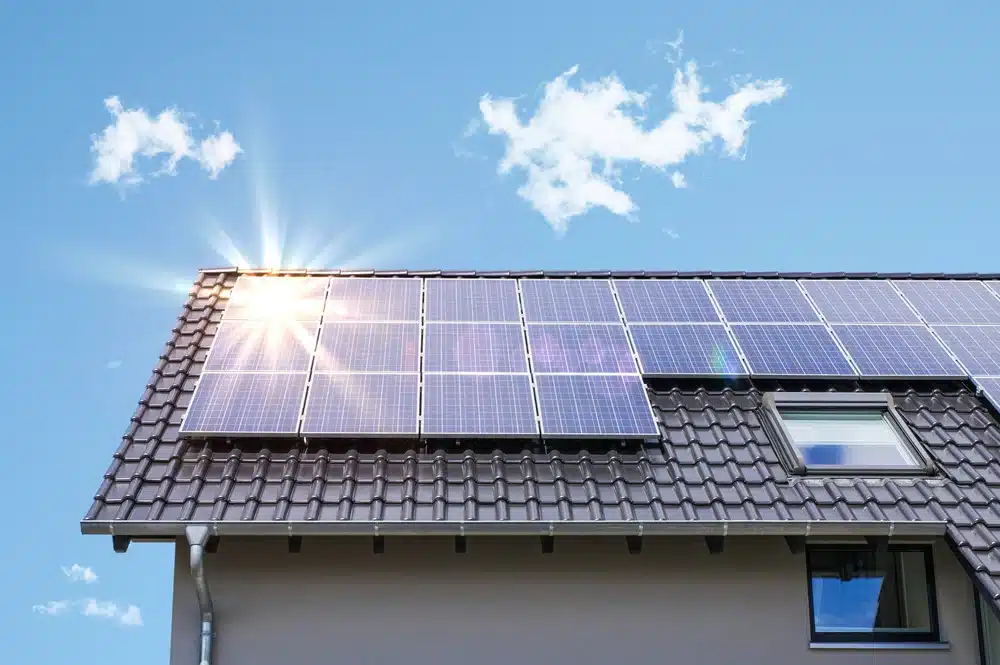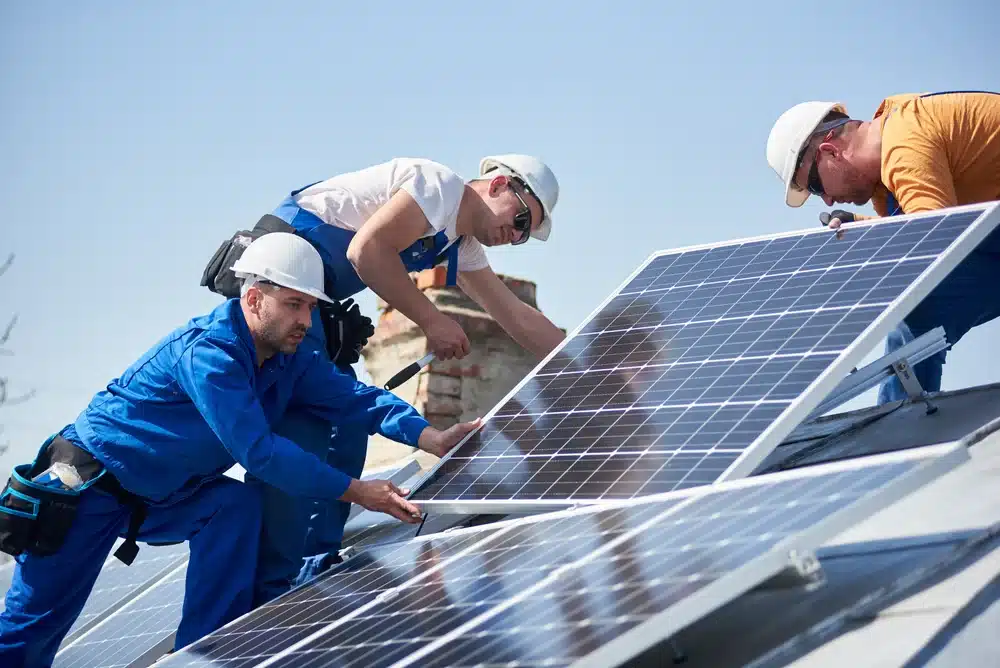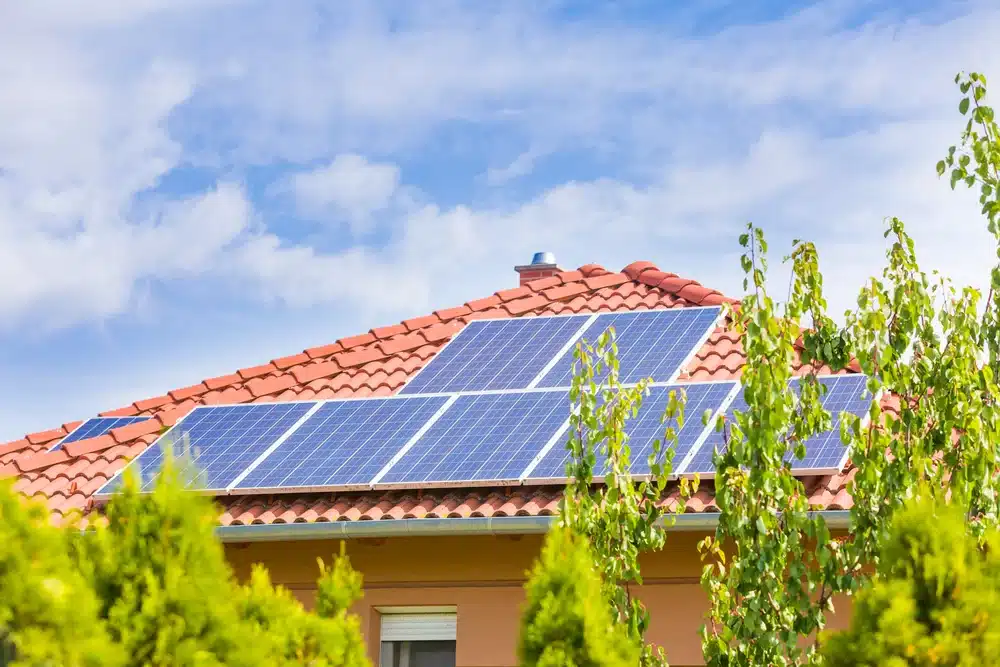Solar panels aren’t just technological marvels; they’re a key player in our shift towards more sustainable, renewable energy sources. And here in Australia, that shift is more like a leap. We’re seeing an incredible uptake of solar technology across rooftops nationwide, a testament to our collective push for cleaner energy and, let’s be honest, a nod to the sunny climate we enjoy.
Australia’s landscape is increasingly dotted with homes and businesses sporting sleek solar arrays. It’s a movement that’s not just about being green but also about smart savings and energy independence. The numbers indicate rapid growth: millions of Aussie households have made the switch, tapping into the sun’s bounty to power their daily lives. This isn’t just good news for the environment; it’s a win for the wallet, too, with significant savings on electricity bills.
Let’s go through what solar panels are, how they work, and their types.
Types of Solar Panels

When you’re considering solar power, one of the first decisions you’ll encounter is choosing the type of solar panels that best suit your needs. Generally, there are three main types: monocrystalline, polycrystalline, and thin-film. Each comes with its own set of characteristics, efficiency levels, and applications. Here’s what sets each type apart.
Monocrystalline Solar Panels
- Characteristics. Monocrystalline panels are easily recognisable by their uniform, dark colour and rounded edges. They’re made from single-crystal silicon, giving them a high purity level.
- Efficiency. These panels are at the top of the efficiency chart, often converting more sunlight into electricity than their counterparts. This makes them an excellent choice for areas with limited space, as you’ll need fewer panels to meet your energy needs.
- Typical Applications. Ideal for residential and commercial rooftops where space might be a premium, monocrystalline panels offer both aesthetic appeal and high performance.
Polycrystalline Solar Panels
- Characteristics. Polycrystalline or multicrystalline panels have a blue hue and a somewhat speckled look, thanks to the silicon fragments melted together to form the solar cells. This process is less wasteful compared to monocrystalline panel production.
- Efficiency. While they’re generally less efficient than monocrystalline panels, polycrystalline panels still provide a reliable and cost-effective solar solution. The gap in efficiency has been narrowing, making them a competitive option for many homeowners.
- Typical Applications. These panels are a popular choice for those seeking a balance between performance and cost, suitable for residential rooftops where space is less of an issue.
Thin-Film Solar Panels
- Characteristics. Thin-film panels are made by layering photovoltaic material on a substrate. They can be identified by their uniform, dark appearance and flexibility. This type of panel is the least affected by high temperatures.
- Efficiency. Generally, thin-film panels have lower efficiency rates compared to crystalline silicon panels. However, their performance doesn’t degrade as quickly in high temperatures, which can be an advantage in hot climates.
- Typical Applications. Due to their flexibility, thin-film panels can be applied to a variety of surfaces where traditional panels might not be suitable. They’re often used in large-scale commercial projects and in situations where panel weight is a concern.
Comparative Table: Solar Panel Types
| Feature | Monocrystalline | Polycrystalline | Thin-Film |
| Appearance | Uniform dark colour, rounded edges | Blue hue, speckled | Uniform dark colour, flexible |
| Material | Single-crystal silicon | Multiple silicon fragments | Photovoltaic material on a substrate |
| Efficiency | Highest | High | Lower, but less affected by high temperatures |
| Space Requirement | Less panels needed for same output | More panels needed for same output | More panels needed for same output |
| Cost | Highest | Lower than monocrystalline | Varies depending on application |
| Typical Applications | Limited space (residential/commercial rooftops) | Balance of cost and performance (residential rooftops) | Flexible surface applications, hot climates, large-scale projects |
| Temperature Sensitivity | More sensitive to high temperatures | Moderately sensitive to high temperatures | Least sensitive to high temperatures |
How Solar Panels Capture Solar Energy

At the heart of every solar panel is a marvel of modern science: the photovoltaic (PV) cell. These cells are the components that allow solar panels to convert sunlight into electrical energy that powers our homes and businesses with renewable power. Here’s a closer look at how this process unfolds.
Understanding Photovoltaic Cells
- The Basics. Photovoltaic cells are made primarily of silicon, which is a semiconductor. This material has properties that allow it to absorb sunlight and convert it into electricity.
- Sunlight Interaction. When sunlight hits a PV cell, it energises the silicon. This energy knocks electrons loose, creating a flow of electricity. This phenomenon is known as the “photovoltaic effect,” which gives the cells (and the technology) their name.
The Process of Energy Conversion
- Absorption of Sunlight. Each photovoltaic cell contains a layer of silicon cells. These cells absorb solar radiation that excites the electrons in the silicon.
- Creation of Electrical Current. The energised electrons are knocked free from their atoms and move towards the front surface of the solar cell, creating an imbalance. When conductors are attached to the positive and negative sides, it forms an electrical circuit. As electrons flow through this circuit, electricity is generated.
- Conversion to Usable Power. The electricity generated by PV cells is direct current (DC). However, most homes and appliances use alternating current (AC). Solar panels are therefore connected to an inverter, which converts DC into AC, making the electricity usable for household needs.
- Distribution and Use. Once converted, this electricity can power everything from lights and appliances to heating and cooling systems. Any excess energy produced can be stored in batteries for later use or fed back into the grid, often in exchange for credit.
The Efficiency of Solar Panels

One term that often pops up in the context of solar panels is “efficiency.” But what exactly does that mean? Simply put, solar panel efficiency refers to the portion of sunlight that, upon hitting the solar panel, is converted into usable electricity. It’s a measure of how well your solar panel can take advantage of the sun’s energy.
Understanding Solar Panel Efficiency
Conversion Rate
Typically, most solar panels on the market have an efficiency rating ranging from 16% to 22%. This means if a panel has an efficiency rate of 16%, then 16% of the sunlight that strikes the panel will be converted into electrical energy.
Factors Affecting Efficiency
Several factors can influence the efficiency of your solar panels, some of which are within your control, while others depend on your environment and the panel’s characteristics:
- Material. The type of material used in solar panels (monocrystalline, polycrystalline, thin-film) can affect efficiency levels. Monocrystalline panels, for instance, typically offer higher efficiency rates due to the purity of silicon used.
- Placement. How and where solar panels are installed plays a crucial role. Panels placed in a spot that receives direct sunlight for the majority of the day will perform better. The angle and orientation of your panels (ideally facing north in Australia) can also maximise sunlight exposure.
- Australian Weather Conditions. Our weather is a bit of a mixed bag; while we enjoy plenty of sunny days, the intensity and angle of sunlight can vary. In general, solar panels are highly effective across Australia, but their efficiency can be influenced by local weather patterns, including cloud cover and temperature. Interestingly, solar panels can perform better in cooler temperatures, as excessive heat can slightly reduce their efficiency.
Efficiency in Practice
While efficiency ratings are a helpful guide, it’s essential to consider them in context. A higher efficiency rate means more electricity generation in a smaller space, which is particularly beneficial for roofs with limited space. However, with advancements in solar technology, even panels with “average” efficiency ratings are more than capable of meeting the energy needs of most households.
The Lifespan and Durability of Solar Panels

When considering the switch to solar, understanding the lifespan and durability of solar panels is important. It’s not just about the immediate benefits but also how this investment will serve you in the long term. Let’s dive into what you can expect from your solar panels over the years.
Expected Lifespan
- Long-Term Investment. On average, solar panels are built to last 25-30 years. This doesn’t mean they stop producing electricity after this period; rather, their energy production capacity may decrease more significantly beyond this time frame.
Durability Against Environmental Factors
- Weathering the Storm. Solar panels are designed to withstand various environmental factors, including heavy rainfall, strong winds, and even hail. Manufacturers test panels under extreme conditions to ensure they can endure the typical weather patterns they’ll face over their lifespan.
- Resistance to Physical Impacts. High-quality solar panels are also resistant to physical impacts. This robustness is crucial in maintaining their efficiency and output over the years.
Power Output Degradation
- Inevitable Decline. All solar panels will experience some level of degradation in power output over time. This is a natural aspect of their operation, but the rate at which this occurs is a key indicator of panel quality.
- Quality Matters. The best solar panels on the market degrade at a rate of about 0.5% annually, which means they retain most of their efficiency over the years. Standard panels might degrade at a rate of 1% or more each year.
System Components Lifespan
- Beyond the Panels. It’s important to remember that while the panels themselves are built for longevity, other parts of the solar system, such as inverters and batteries, may have shorter lifespans. These components typically last between 10 to 20 years, depending on the quality and how well they’re maintained.
The Importance of a Reliable Warranty
Given the long-term nature of this investment, securing a comprehensive and reliable warranty is essential. A solid warranty gives you confidence and ensures that your solar system continues to operate effectively to maximise your return on investment.
Installation and Integration of Solar Panels

Installing and integrating solar panels into your home’s electrical system is a process that, while straightforward, involves several key steps to ensure everything works seamlessly and efficiently. Let’s walk through the basic journey from deciding to go solar to watching your panels convert sunlight into power for your home. For a detailed overview of the installation and post-installation process, head here.
Initial Assessment and Design
- Site Evaluation. Before anything else, a professional from Solar Run will assess your home to determine the best placement for the panels, taking into account factors like roof space, orientation, and shading from trees or buildings.
- System Design. Based on the evaluation, the solar experts will design a solar panel system tailored to your home’s needs and energy goals. This design will consider the type of solar panels (monocrystalline, polycrystalline, or thin-film) that best suits your situation.
Installation Process
- Mounting the Panels. Installation begins with setting up the mounting system on your roof, which will hold the panels in place. This system is important for the stability of your solar panels and is designed to withstand environmental elements.
- Installing the Panels. Once the mounts are in place, the solar panels are securely attached. Our team ensures that each panel is optimally positioned to capture the maximum amount of sunlight.
- Wiring. With the panels mounted, the next step is to connect the system to your home’s electrical network. This involves wiring the solar panels to an inverter, which converts the DC electricity generated by the panels into AC electricity usable in your home.
Integration with the Home’s Electrical System
- Connecting to the Inverter. The inverter transforms the sun’s energy into power that your home appliances can use. Solar technicians carefully integrate this with your home’s electrical panel to ensure a smooth transition of power.
- Final Inspection and Testing. After installation, a thorough inspection is conducted to ensure everything is correctly set up and complies with local regulations. The experts also test the system to make sure it’s operating efficiently and safely.
Powering Up
- Switching On. With everything installed, inspected, and tested, it’s time to turn on your solar panel system. You’ll start generating your own clean, renewable energy, reducing your reliance on the grid and lowering your electricity bills.
Long-Term Support
- Monitoring and Maintenance. After installation, you’ll have the ability to monitor your system’s performance, through apps like Amber for Batteries. Solar Run provides ongoing support and maintenance advice to ensure your system continues to operate optimally over the years.
Environmental Impact of Solar Panels

Adopting solar panels is more than a step towards energy independence; it’s a stride towards a more sustainable and environmentally friendly future. Here’s how solar panels are playing a crucial role in reducing our ecological footprint and promoting a cleaner world.
Key Environmental Benefits
- Reduced Carbon Footprint. One of the most significant advantages of solar panels is their ability to produce clean, green energy. By harnessing the sun’s power, solar panels generate electricity without emitting harmful pollutants or greenhouse gases into the atmosphere, directly contributing to the reduction of global carbon emissions.
- Renewable Energy Generation. Solar energy is inexhaustible, unlike fossil fuels. By investing in solar panels, we tap into an endless supply of power that’s available every day, reducing our reliance on non-renewable energy sources that contribute to environmental degradation.
Sustainability and Recyclability
- Long Lifespan. Solar panels are designed to last for 25-30 years or more, providing a long-term solution for renewable energy. This durability means less waste and a longer period before recycling or disposal is considered.
- Recyclability. The solar industry is increasingly focusing on making solar panels recyclable. Many components of a solar panel, including the glass, metal, and certain semiconductors, can be recycled and used in the production of new panels, contributing to a circular economy.
- Minimal Environmental Disruption. Compared to traditional energy sources that can have a negative impact on the environment through mining, drilling, and other extraction processes, solar panels have a minimal physical footprint. Once installed, they produce energy quietly and cleanly, without depleting natural resources.
Ready to Embrace Solar Energy?
If you’re intrigued by the potential of solar panels to transform how you generate and consume energy, now is the perfect time to reach out. Solar Run is dedicated to providing top-notch service, from the initial consultation to post-installation support, making sure you’re well-equipped to make the most of your solar investment.
Whether you’re looking to reduce your electricity bills, contribute to a healthier planet, or simply take control of your energy needs, Solar Run is here to turn those aspirations into reality. For all solar panel-related inquiries or to start your journey with solar energy, get in touch with us today.







 Text Us
Text Us